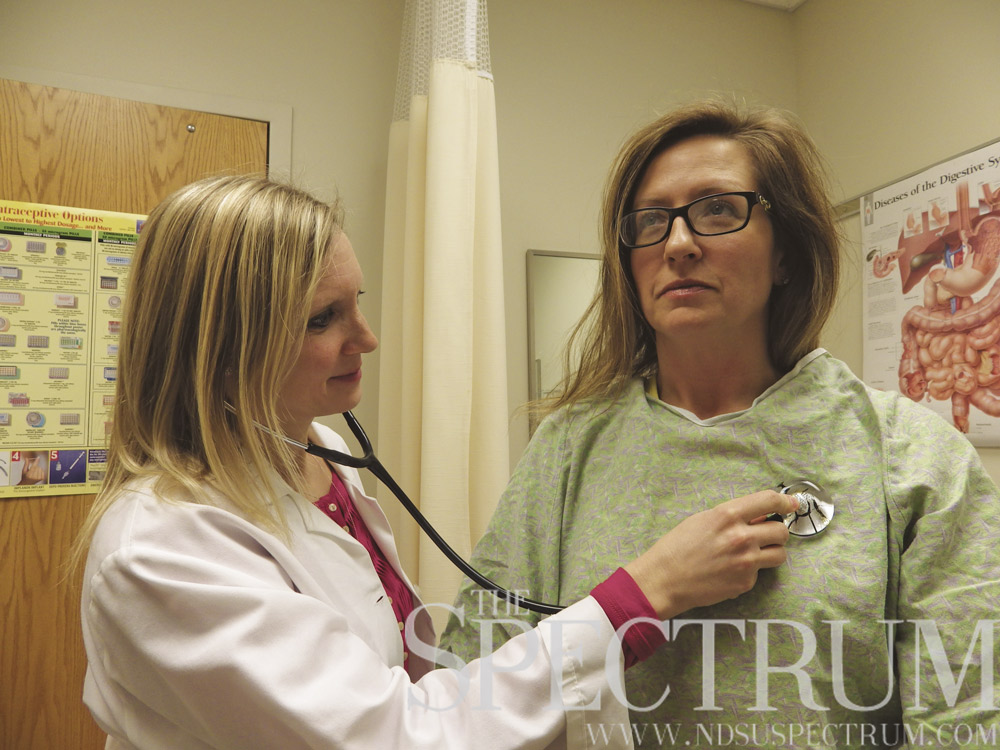
JoAnna Solhjem listens to Michele Kraemer’s lungs Friday at the student health center in the Wallman Wellness Center.
Student health services stretched its five-year finance plan to six years before the campus entity received a fee increase with President Dean Bresciani’s blessing.
SHS’s 2010 budget plan extended a year past its expectations due to external reviews, reconfiguring staffing, examining supplies, reducing costs, going paperless and opting for online charting, said Patricia Dirk, SHS director. The approved fee increase of $0.54 per credit to take effect next fall will “sustain operations for the fiscal year,” Dirk said, though SHS “will continue to review budget, operations, enrollment growth and increased utilization of the student health service.”
When fee increases are requested and given, SHS tries its best to budget for the future, Dirk said, adding the service is “cross-training staff to do more” as in radiology technicians drawing blood, assisting nurses and doing administrative work.
Dirk said that they are “cross-training staff to do more” as in rad techs drawing blood, assisting nurses and doing administrative tasks.
Costs were able to be reduced by having less staff in the summer, more nine-month staff and by not having a full-time physician. SHS hopes to move the current physician to full-time status.
Dirk said SHS is “a little short on providers” but that the service is trying to reduce student wait times but haven’t had complaints about waits.
Student visits have increased approximately 20 percent since 2010. Over 50 percent of SHS revenue is generated from student fees.
North Dakota State student fees are the lowest when compared to other schools regionally at $4.76 per credit, whereas University of North Dakota students pay $8.88 per credit.
SHS hoped for an increase of $2.33 or $3.33 per credit but will do the best it can with the $0.54 increase, Dirk said, adding everyone was on board and supportive of the increase.
However, increases cannot go over 1 percent without the State Board of Higher Education’s approval, and there was miscommunication whether the Aquatic Center increase was included in the voting. The Wellness Center’s request increase for its aquatic addition received an increase of $2.26 per credit as the only other campus entity to receive a student fee increase.
Dirk said SHS “may ask for a increase again next year” as it maintains operations.
If SHS wouldn’t have received the fee increase, the service would have faced staff reductions, Dirk said. There would have been decreased hours of service, decreased appointment availability and student would have faced longer wait times for appointments. Students also would have faced fees if they didn’t show for their appointments.
The increase will go into effect in fall 2016 and will go toward maintaining current operations. Dirk said SHS will “try to get interim staff in the fall when it’s the busiest.”
There is a 10-year capital plan which doesn’t take into account emergencies. This year, SHS’s regulated fridge with immunizations, including state immunizations, went down and had to be replaced which was an unforeseen cost, Dirk said.
